Iwase – the Japanese town that time (nearly) forgot
This stylish enclave of Michelin-starred restaurants and award-winning craftsmen in Toyama prefecture is the result of one man’s mission to bring his hometown back to life

RYUICHIRO MASUDA BENDS DOWN TO pick up a stray scrap of litter on the ground.
There are no bins around, as is the norm in Japan, so he nonchalantly stuffs it into his jeans pocket. As we follow him down the main street of Higashi-Iwase, a minivan slows down, and he exchanges pleasantries with the Caucasian driver and his Japanese wife.
“He’s Canadian,” says Masuda. “He runs a (bed and breakfast) near here.” He points vaguely up the immaculate 500-metre or so stretch of road ahead, neatly lined with traditional Japanese townhouses that date as far back as the Edo period.
The pristine cleanliness (we can see why) and lovingly restored buildings that make this place look like the production set of a samurai movie is no accident.
Twenty-six years ago, Masuda – whose day job is fifth-generation owner of acclaimed sake brewery Masuda Shuzo – set in motion an ambitious project to prevent his hometown from falling victim to the akiya (abandoned house) phenomenon afflicting many small and rural communities in Japan.

He began buying up houses, slowly converting them and finding suitable tenants to move into them. He now counts at least 40 properties that he has turned into restaurants (six of them are either Michelin-starred or Bib Gourmand-rated), ateliers for acclaimed glass, ceramic, wood and lacquer artists, craft beer breweries, wine and sake shops, speakeasy bars, and more.
SEE ALSO
A NEWSLETTER FOR YOU

Lifestyle
Our picks of the latest dining, travel and leisure options to treat yourself.
This once-desolate town is now a thriving gourmet and cultural hot spot that is attracting the Tokyo “in” crowd, top chefs and bon vivants from around the world. The tiny enclave is just 10 minutes’ drive from Toyama city, or a charming 20-minute tram ride. From Tokyo, it’s an easy two-hour Shinkansen train ride.
Rebuilding a historic town
In its heyday, the Iwase district was a thriving port of call favoured by kitamaebune (merchant ships) that sailed the Sea of Japan along the trade routes from Hokkaido to Osaka. Being part of Toyama prefecture and the famed Toyama Bay, Iwase has excellent access to seafood and farm produce – a big draw that would later help Masuda convince top chefs to move into his neighbourhood.
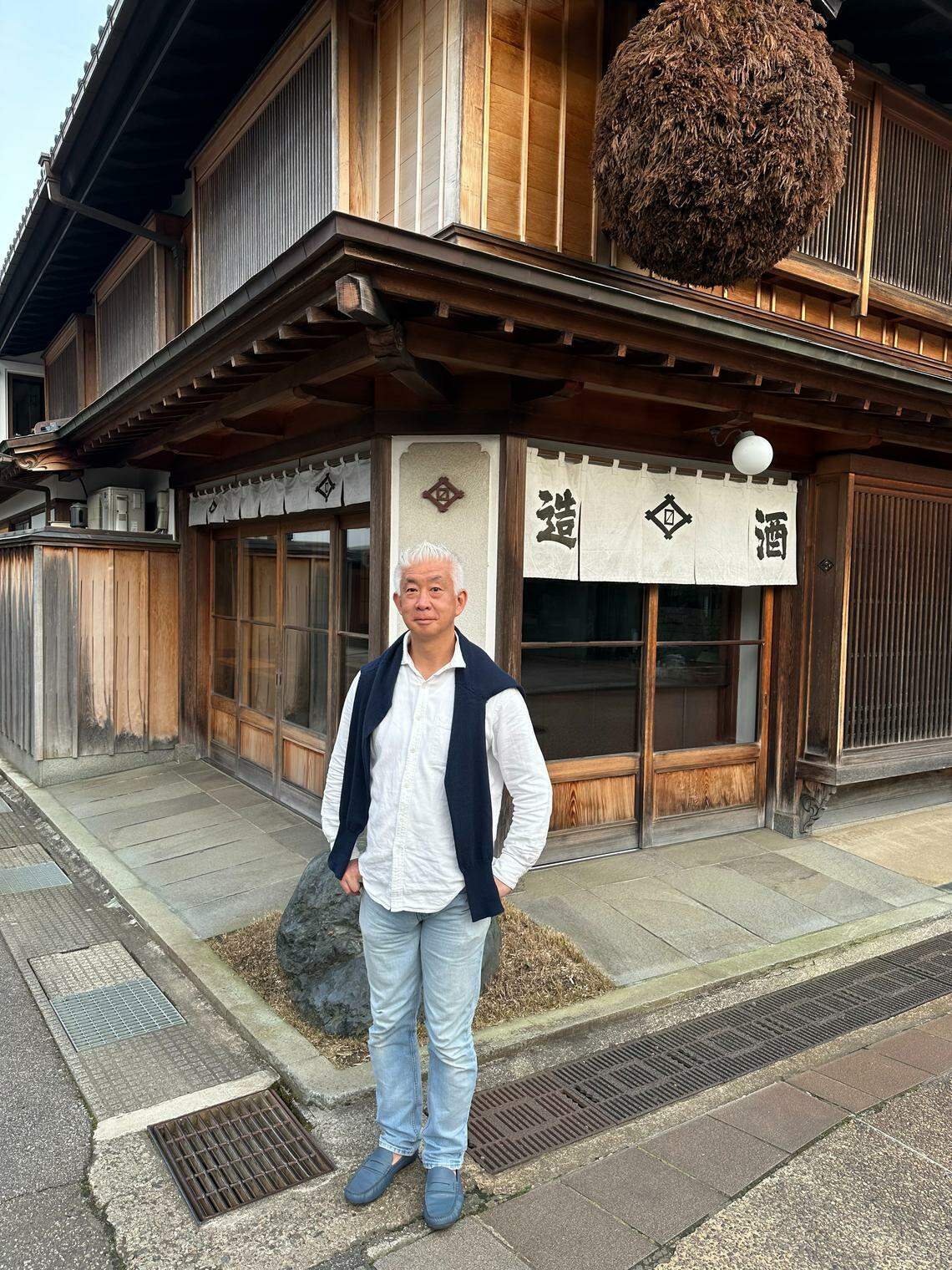
Silver-haired and dapper with a worldly air about him, the 57-year-old Masuda was 31 when he took over the reins of the family brewery and felt compelled to do something about his fast-declining town, where residents were leaving in droves for better prospects in big cities like Tokyo.
“The population used to be 10,000 or 20,000,” says Masuda in charmingly fractured but clearly articulated English. “Now, maybe 3,000 or 4000 – getting so small.” He remembers how, when he was in elementary school, there were some 120 students in the same grade. Now, it’s about 20 at best.
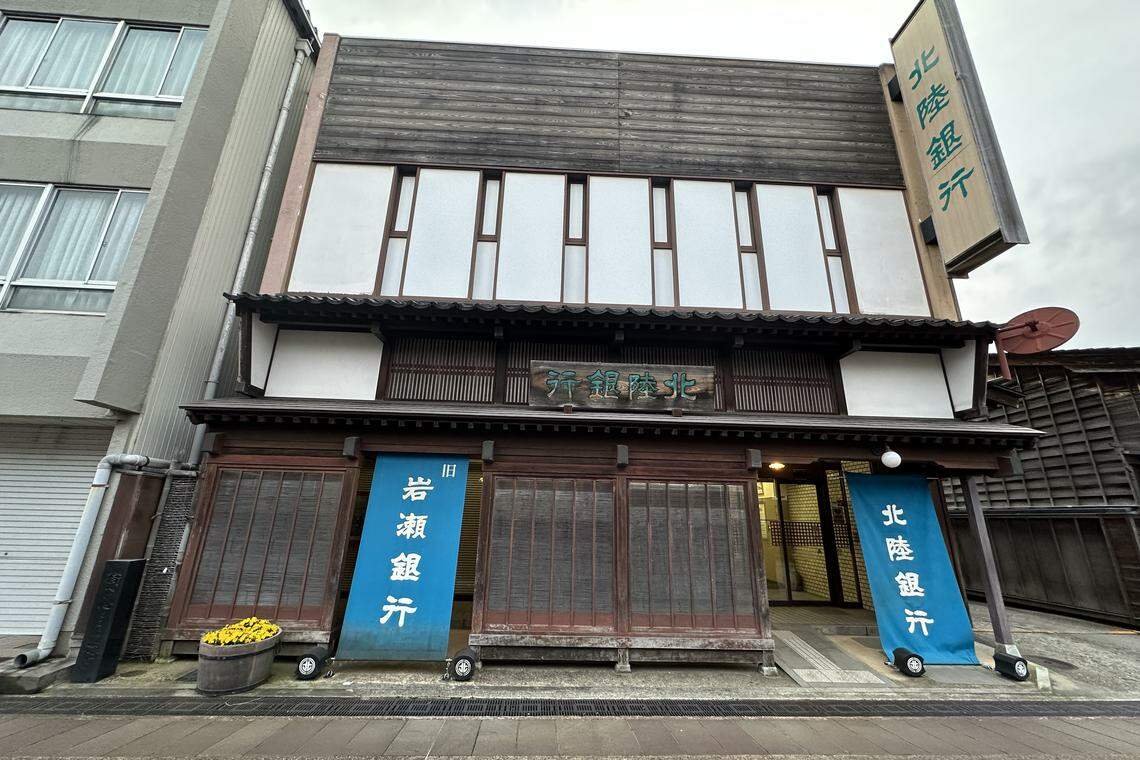
Inspired by the idyllic countryside towns and villages he had visited during his time in the UK, he wanted to create something similar back home. “If I can make a high-quality countryside (lifestyle) town, and have good food and culture, people will come.”
With food and craft as his focus, Masuda launched his charm offensive, extolling the virtues of countryside living and fresh produce to talented chefs and artisans in and around Toyama city and, eventually, even foreigners.
“In Tokyo, you cannot eat morning-caught fish, but here, it is all like that,” he enthuses. “We send fish to Tokyo, but people are eating it two days after, so it is not so good. Here, everything is fresh and we know who is catching (the fish) or growing the vegetables. Everything is so good.”
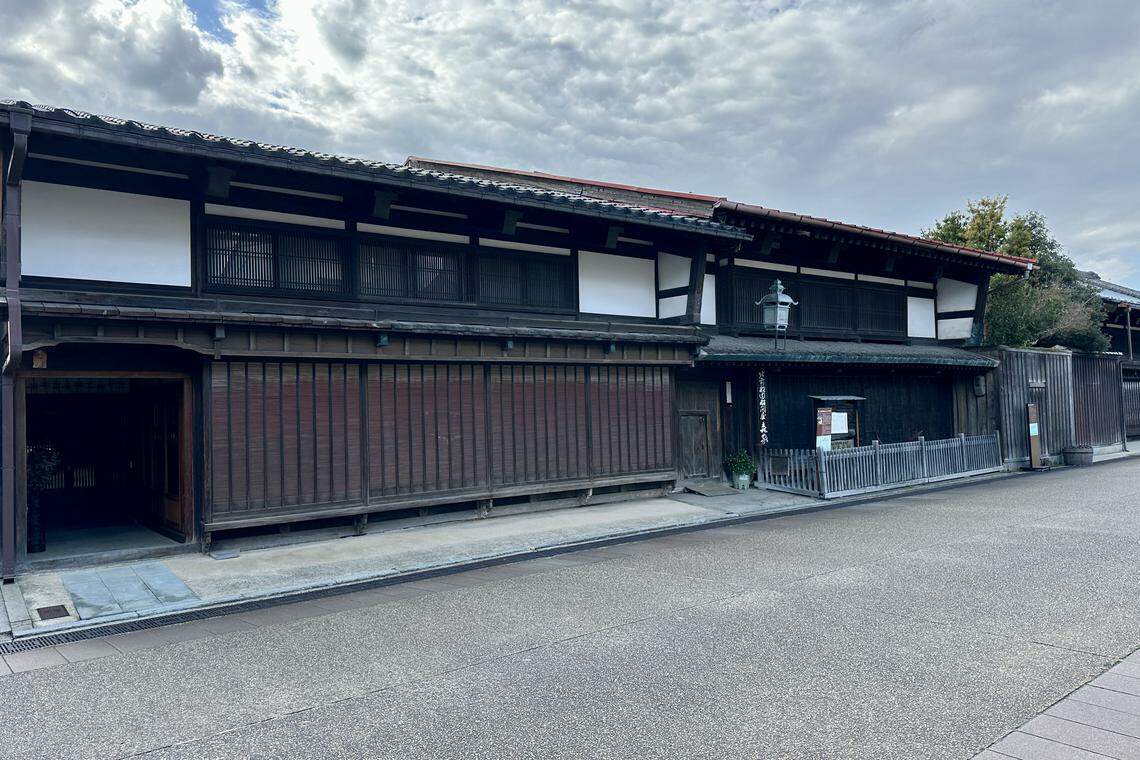
His first success was glass artist Yasuda Taizo, a rising star at the time and now foremost in his field. With some help from the Toyama prefecture government to convert three units for his atelier, residence and workshop, the artist relocated to Iwase with his family. His workshop – built around a blazing oven – produces myriad beautiful glassware and art works. Many of these are used in the town’s restaurants, such as the two-Michelin-starred Oryouri Fujii, which offers guests a selection of exquisite sake glasses to choose from.
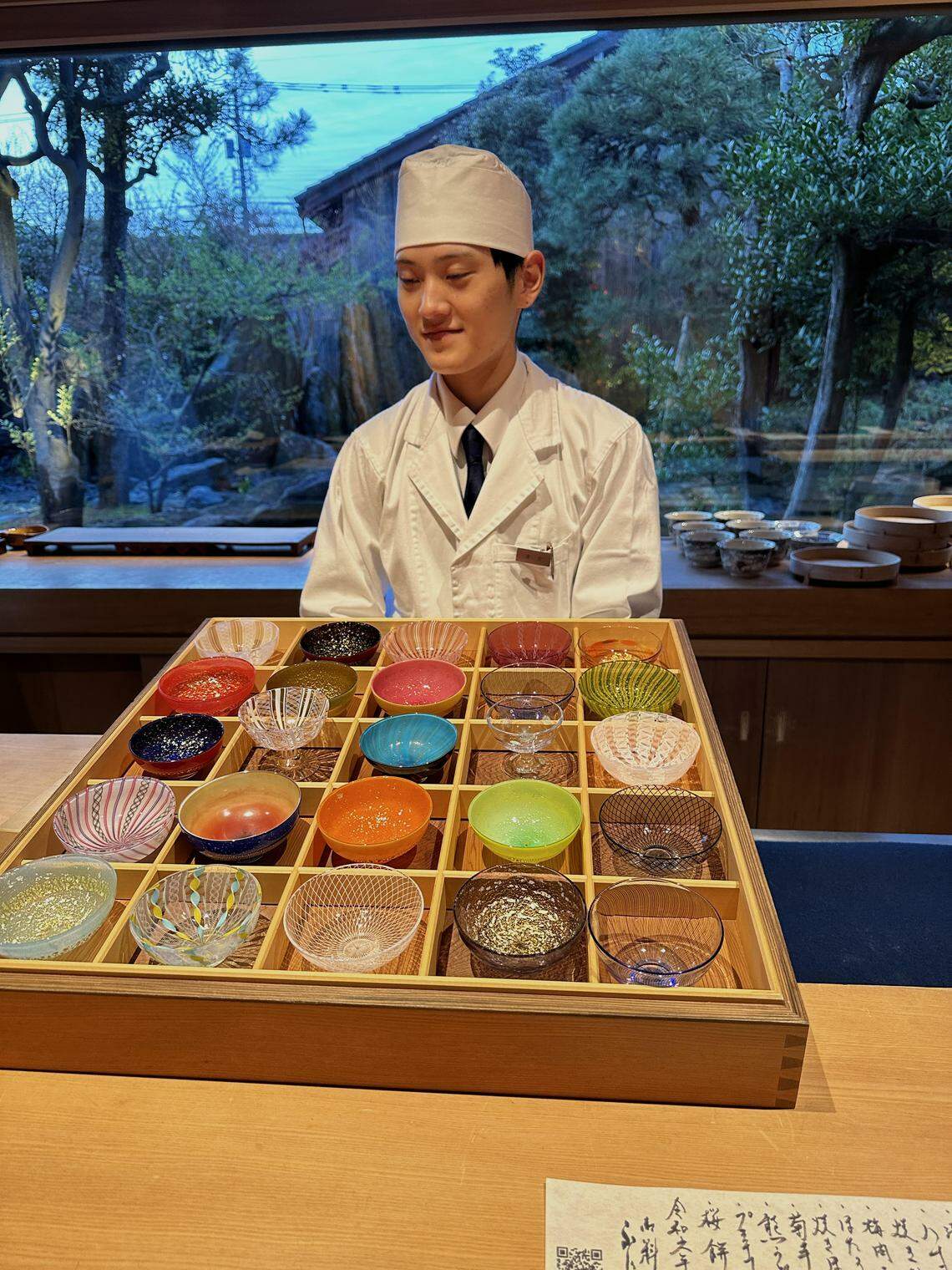
Between Taizo and chef Hironori Fujii – who was already running his own restaurant in the city before moving to Iwase five years ago – word spread, and more artisans like them from surrounding prefectures were spurred by Masuda’s vision and came calling, to his delight.
While Masuda has had some government help for his work in developing the town and promoting the prefecture in general, the town’s revival has been largely funded by his own brewery business.
Most of the houses are rented out, although he has sold some of them – to Taizo, for example – but it’s not a money-making venture. “I want to be proud of this town,” says Masuda, who has three children aged 22 to 28 who are currently in Tokyo and Kyoto. “It is for my kids. If they cannot be proud of the town, they won’t come back.”
What to see and eat
One thing is starkly missing when you step foot in Iwase – spinner-dragging, guidebook-toting tourists. In fact, the streets almost seem deserted, but that’s deliberate, says Masuda, who doesn’t like the idea of random visitors ringing the doorbells of ateliers and disturbing the craftsmen at work.
Showroom visits are by appointment only, and the restaurants require reservations, so the people who go have reason to be there. But, you do still see a handful of visitors wandering about off the main street, some stopping to browse wine and sake shops, or for a taste of Masuda Shuzo’s famous Masuizumi sake in a dedicated tasting centre that looks more like an art gallery.
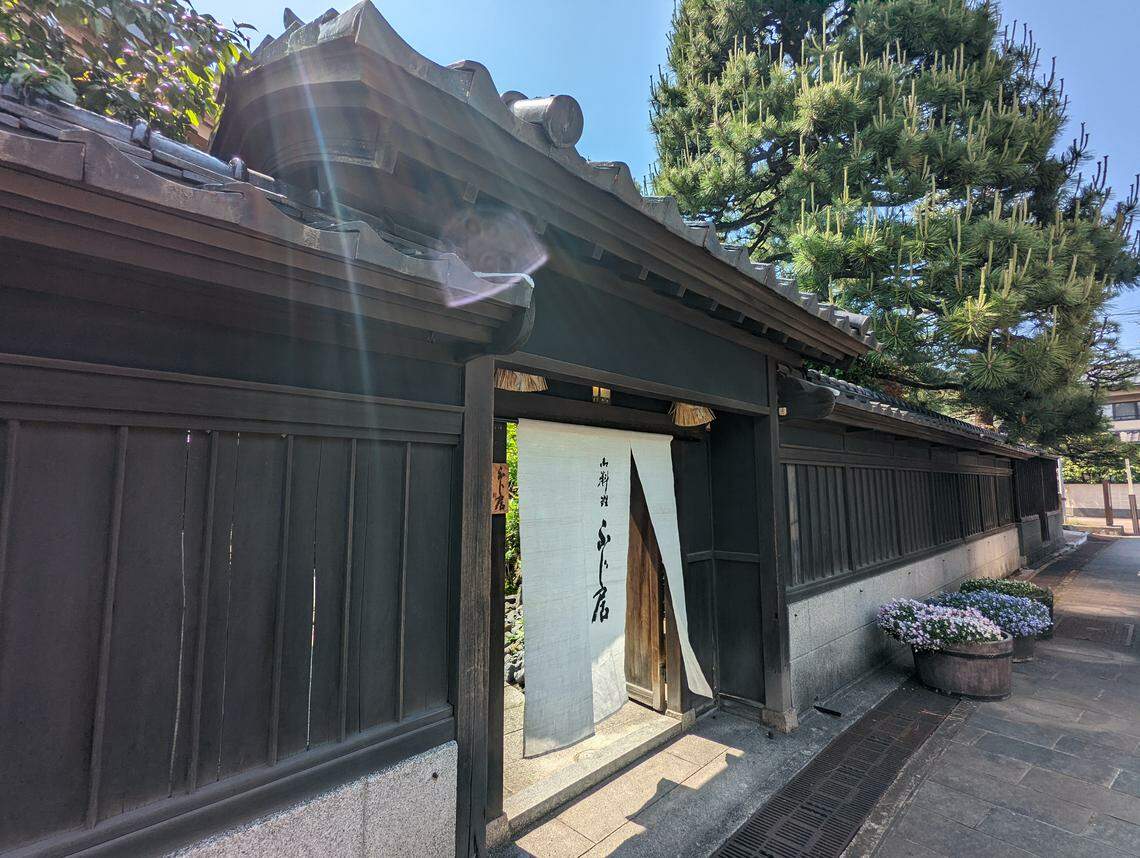

What stands out about the restored houses is that behind each discreet facade is a unique, sometimes unexpected, personality. Masuda takes you on a tour through small alleys and winding corners, where you stumble into vibrantly decorated speakeasy bars that he entertains guests in. Among them is a boudoir-like whisky bar bathed in blue light that leads to a separate room lined with shelves of Chivas Regal, and a darkened bourbon bar bathed in spotlights shining on bold, life-sized creatures sculpted out of styrofoam by a Japanese artist.
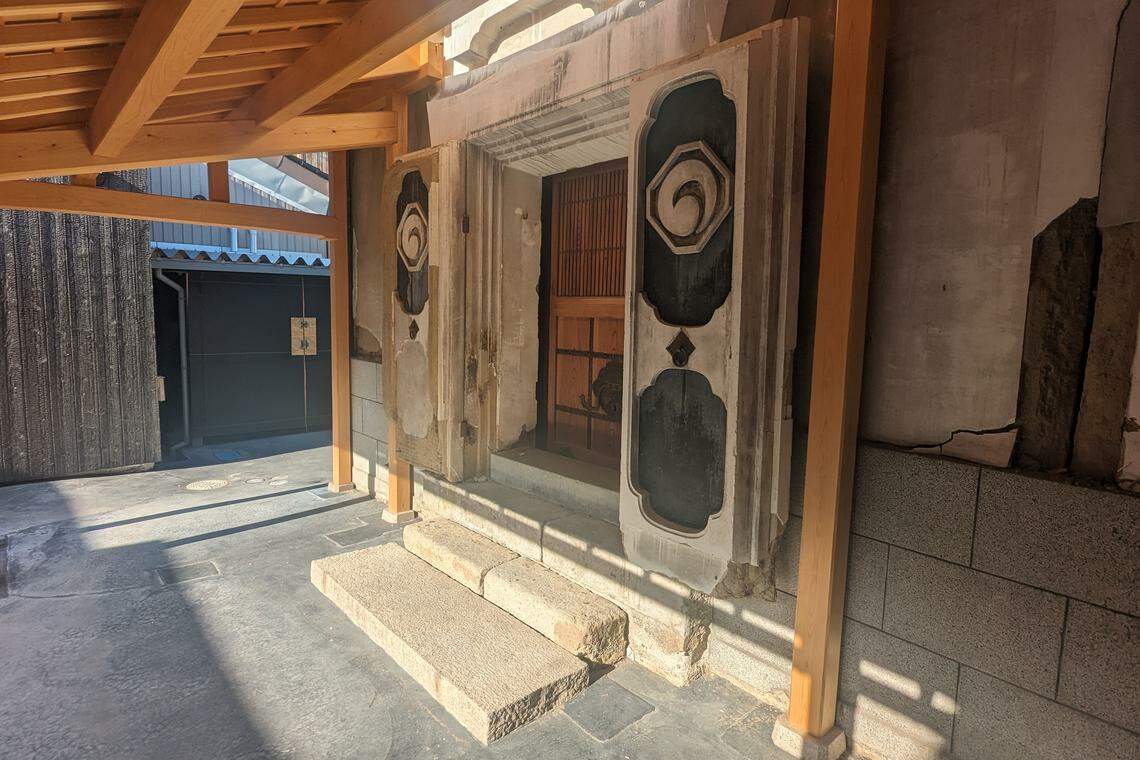

For a taste of Toyama seafood, head to the hard-to-get Oryouri Fujii, housed in a beautifully restored villa with its own landscaped garden. Here, chef Fujii serves a full kaiseki menu built around local produce from tuna to hotaru ika, or firefly squid, all exquisitely presented on crockery made by local artisans.
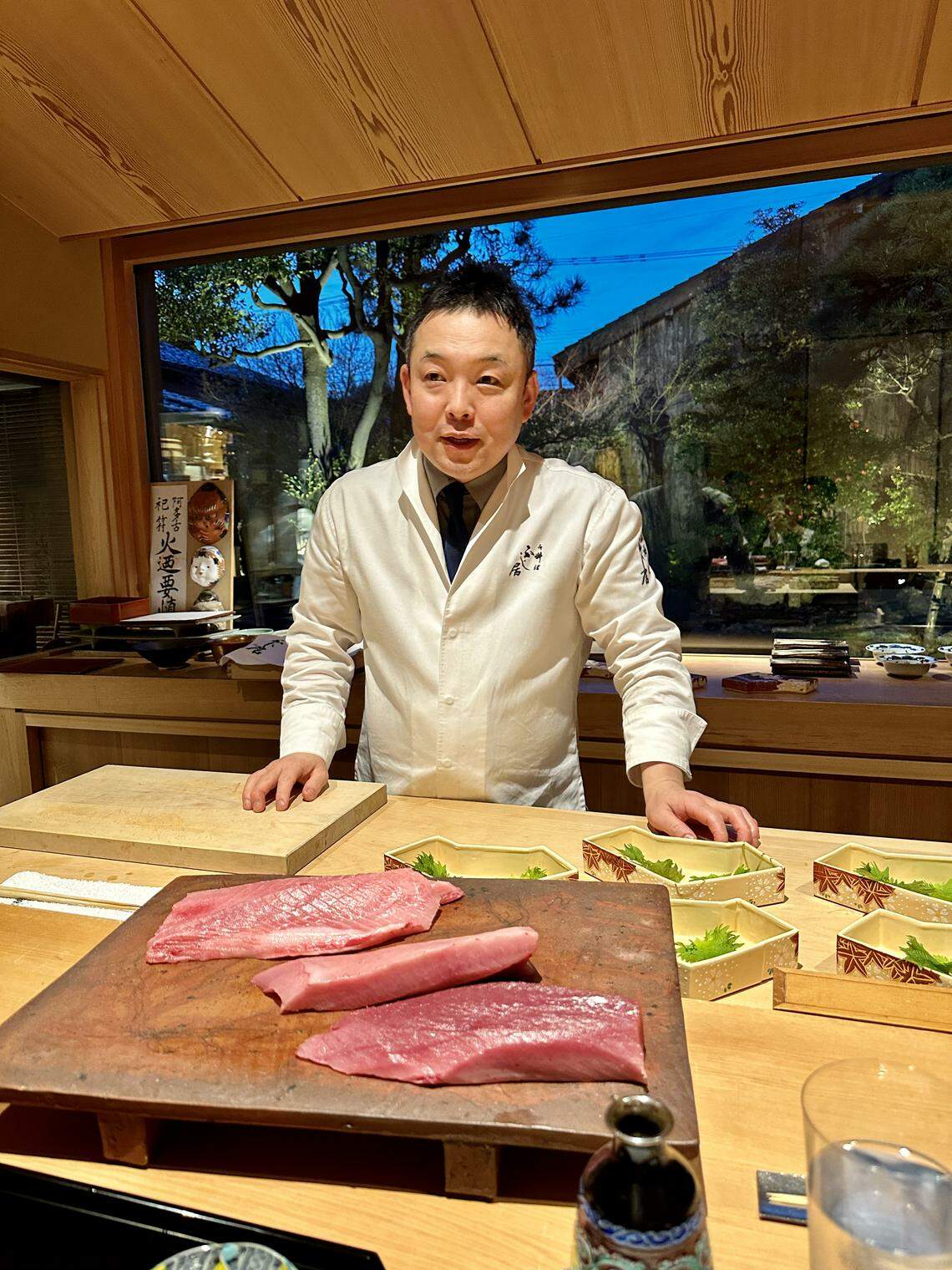
Slightly more casual but no less refined is Uozugun Nenjiritei, reputed for its astounding array of sashimi featuring lesser-known fish caught and served the very same day. While some sushi chefs like to boast about their ageing techniques, it’s the complete opposite here. Chef Miura Yukio’s skill is in preparing the fish in such a way that it tastes as if you’re eating them alive. There’s an unbeatable sweetness, and this is the first place where we’ve seen live firefly squid, much less tasted it as sashimi.
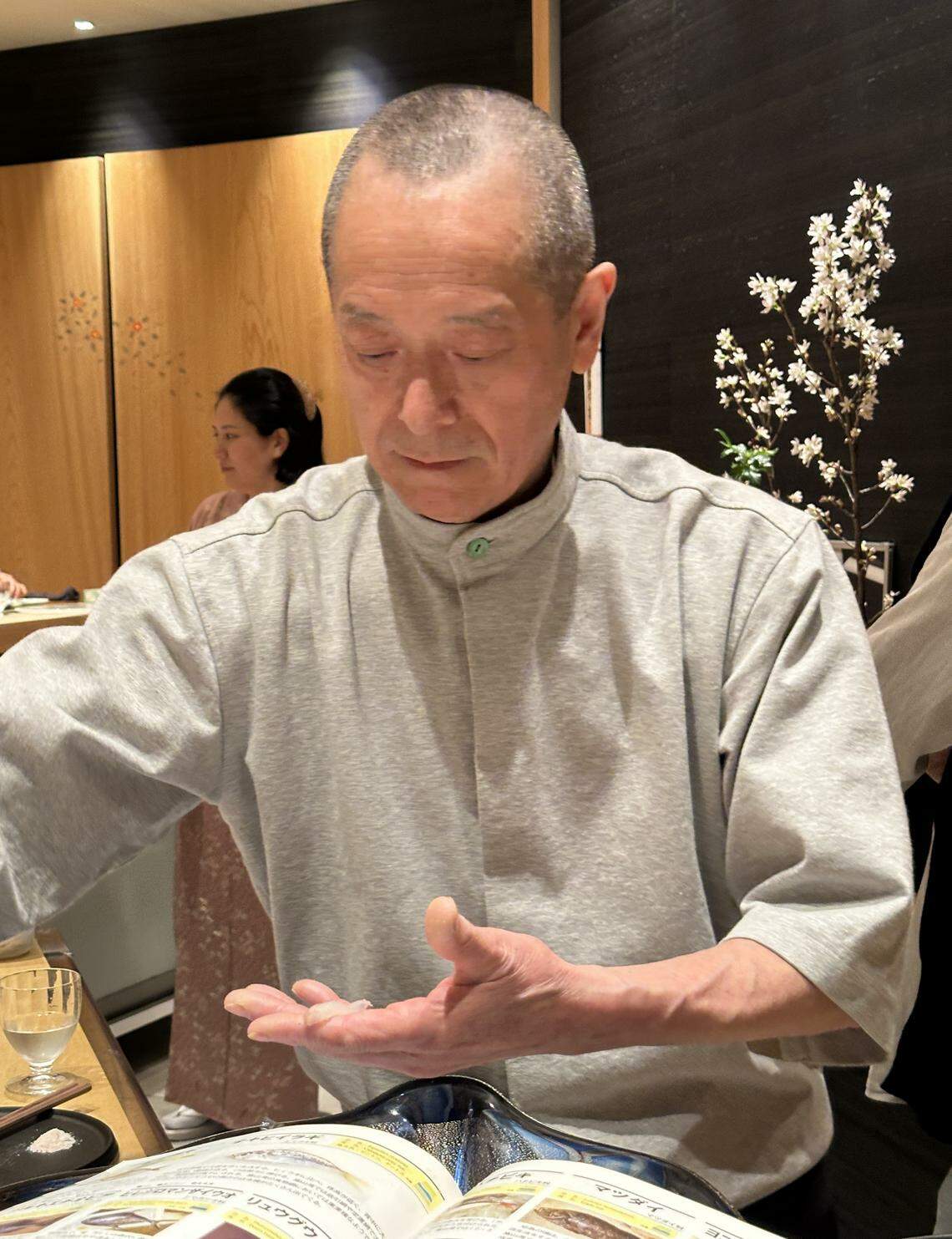

Unfortunately, chef Takahiro Gejo of the one-Michelin-starred Sushi Gejo isn’t in town during our visit, instead we get some of the most authentic soba we’ve ever had at Kuchiiwa, just next door to Nenjiritei. Sitting at its cool, carved wood counter, we taste different varieties of soba handmade from buckwheat grown in Toyama and Gunma prefectures. It’s literally an omakase meal with noodles cut in different widths. Wide rectangles are eaten like sashimi, and cold noodles are eaten with just a bit of salt for maximum flavour (or the normal dipping sauce). Hot soba offers yet another dimension of taste. But it’s not just noodles, as seasonal vegetables and appetisers are also on the menu.
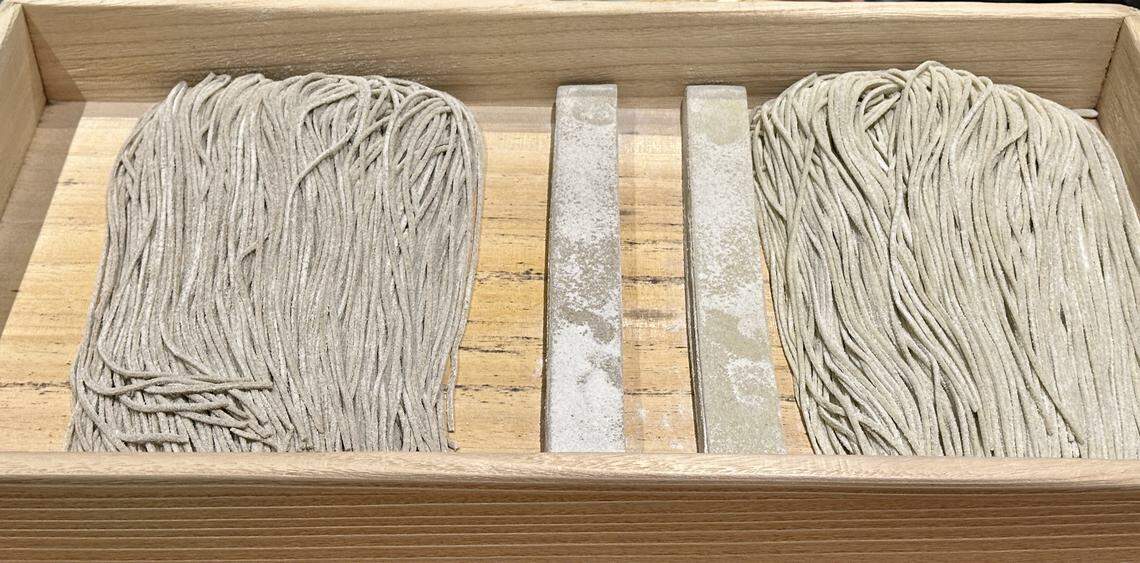
Rounding off the list of eateries are French restaurant Cave Yunoki, Italian restaurant Piatto Suzuki Cinque, and even a Czech craft beer brewery, Kobo. Tsuriya is a gourmet deli of sorts, specialising in dried and preserved local seafood that was a must-stop for chef Andoni Luis Aduriz of Mugaritz in Spain, who happened to be in town as a guest of Masuda.
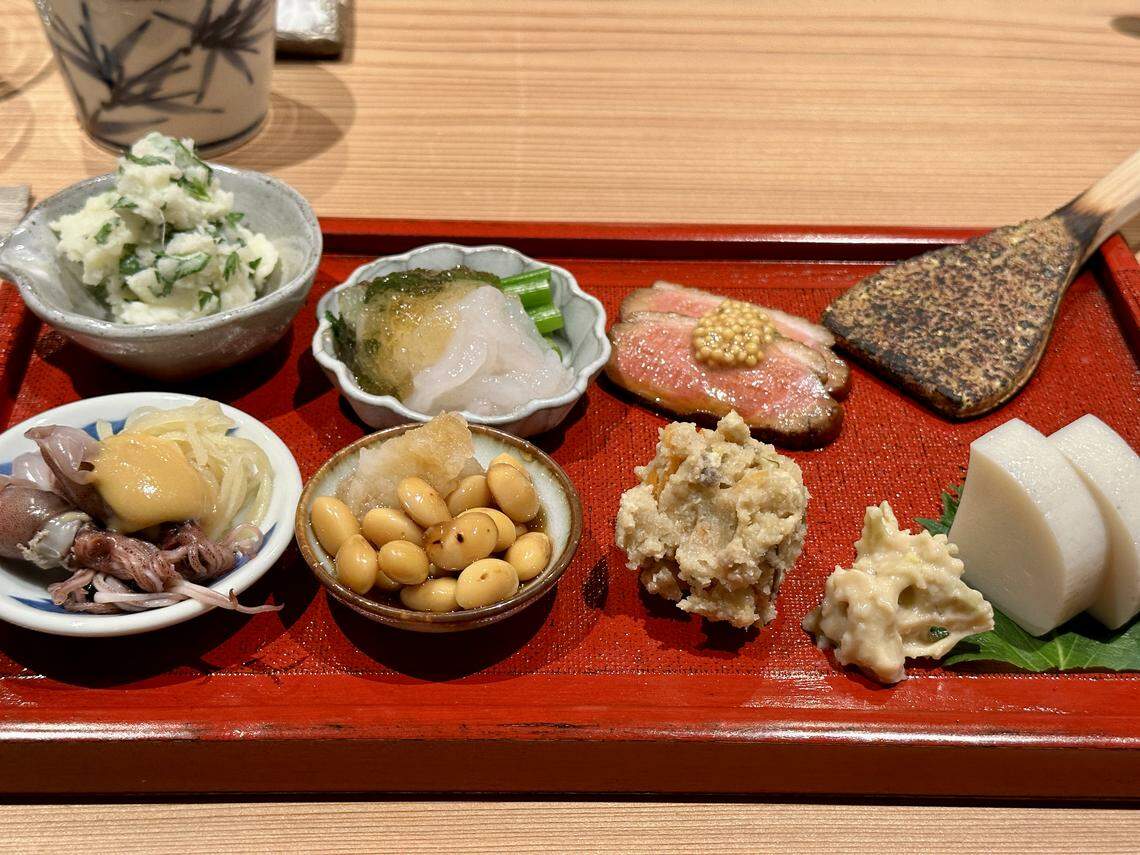
With its growing international reputation and Masuda’s connections in the food and beverage industry, Iwase’s days as a small dying town are over. Especially when Masuda has had plenty of enquiries from people asking him for houses that they can move into.
Still, he’s a little cautious about that, as living in this town isn’t for everybody. “If they move, their life is changed (from the big city). And we have to take care (of) their lifestyle,” says the man, who feels personally responsible for the residents’ welfare. But, if you persevere, he’s more than happy to help.
After all, Iwase is a labour of love for Masuda, and judging by his plans for more collaborations, he’s not stopping any time soon.
KEYWORDS IN THIS ARTICLE
BT is now on Telegram!
For daily updates on weekdays and specially selected content for the weekend. Subscribe to t.me/BizTimes
BT Luxe
Private helicopter wine tours, coastal golf and indulgent spas: Luxe escapes to elevate your next vacation
Charmain Kwee: Steering a car empire at 27
Vacheron Constantin breaks record for most complicated watch
From safari bush retreats to coastal havens: These Top End stays offer the perfect blend of wilderness and luxury
Lee Hui Li: Empowering women, embracing change
Tan Min Lan: Deftly navigating the complexities of leadership
